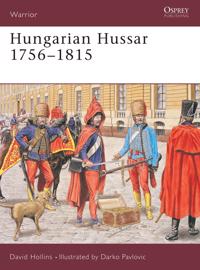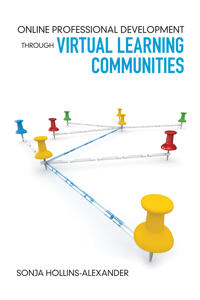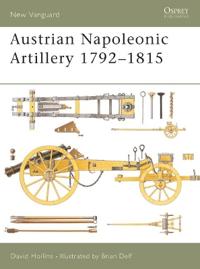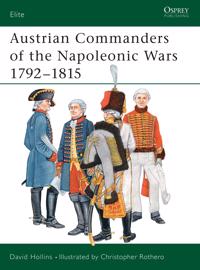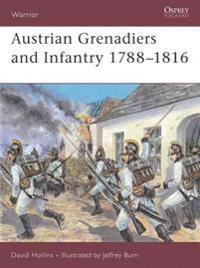Bereavement Care for Childbearing Women and Their Families (Inbunden)
avCaroline Hollins Martin, Eleanor Forrest, Caroline Hollins Martin
ISBN: 9780415827232 - UTGIVEN: 2013-07For many bereaved parents, the care provided by health professionals at birth - from midwives to antenatal teachers - has a crucial effect on their response to a loss or death. This interactive workbook is clearly applied to practice and has been designed to help practitioners deliver effective bere[...]
Hungarian Hussar 1756-1815 (Pocket)
avDavid Hollins, Darko (ILT) Pavlovic, David Hollins
ISBN: 9781841765242 - UTGIVEN: 2003-12Hungary was the home of the elite Hussar. These skilled, daring and flamboyant light cavalrymen were first drawn for Hapsburg service from what is now northern Croatia, Serbia, Slovakia and Hungary in the late 17th century. It was not long before most nations in Europe adopted both Hussar formations[...]
Acoustics And Noise Control (Pocket)
avB. J. Smith, R.J. Peters, Margaret Hollins
ISBN: 9780273724681 - UTGIVEN: 2011-06-09Earlier ed.: Acoustics and noise control / B. J. Smith, R. J. Peters, Stephanie Owen. 1982.
Bereavement Care For Childbearing Women And Their Families (Pocket)
avCaroline Hollins Martin, Eleanor Forrest
ISBN: 9780415827249 - UTGIVEN: 2013-07-19Basic Guide to Anatomy and Physiology for Dental Care Professionals (Häftad)
avHollins, Carole
ISBN: 9780470656112 - UTGIVEN: 2012-08-31The Basic Guide to Anatomy and Physiology for Dental Care Professionals introduces the fundamentals of human anatomy and physiology to the student Dental Care Professional.[...]
Questions and Answers for Dental Nurses (Häftad)
avHollins, Carole
ISBN: 9780470670903 - UTGIVEN: 2012-05-31Over the Horizon: Planning Products Today for Success Tomorrow (Häftad)
avBill Hollins
ISBN: 9780471987178 - UTGIVEN: 1999-06-30Levison's Textbook for Dental Nurses, 11th Edition (Häftad)
avCarole Hollins
ISBN: 9781118500446 - UTGIVEN: 2013-07-31A brand-new edition of the original, best-selling book for all students studying for their dental nurse qualification.[...]
Nvqs For Dental Nurses (Häftad)
avCarole Hollins
ISBN: 9781118629482 - UTGIVEN: 2014-05-31NVQs for Dental Nurses provides trainee dental nurses with a core companion to the all-NEW National Vocational Qualification (NVQ) level 3 Diploma in Dental Nursing. The book offers comprehensive support on mandatory units of the course in addition to supplying material on the optional units most c[...]
Questions and Answers for Diploma in Dental Nursing: Level 3 (Pocket)
avCarole Hollins
ISBN: 9781118923788 - UTGIVEN: 2015-09-11Basic Guide to Dental Procedures (Pocket)
avCarole Hollins
ISBN: 9781118924556 - UTGIVEN: 2015-07-24Basic Guide to Dental Procedures (Häftad)
avCarole Hollins
ISBN: 9781405153973 - UTGIVEN: 2008-06-30Online Professional Development Through Virtual Learning Communities (Häftad)
avSonja Hollins-Alexander
ISBN: 9781452276663 - UTGIVEN: 201307Grounded in the district's Learner - Learner Model, participants in Virtual Learning Communities co-construct knowledge, refine their thinking, and expand their boundaries of learning opportunities across the boundaries of physical proximity, leading to higher levels of teaching effectiveness and ne[...]
Austrian Napoleonic Artillery 1792-1815 (Häftad)
avDave Hollins
ISBN: 9781841764993 - UTGIVEN: 200305The Austrian artillery of the Revolutionary and Napoleonic Wars was a creation of the renowned Lichtenstein system of the early 1750s. This weight system produced a series of weapons of 3-, 6- and 12-pdr. calibre along with 7- and 10-pdr. Howitzers. In the 1780s they were joined by cavalry artillery[...]
Austrian Commanders of the Napoleonic Wars (Häftad)
avDave Hollins
ISBN: 9781841766645 - UTGIVEN: 200401The Austrian Army fought Napoleon in more major campaigns and battles than any other, either alone or as part of successive Allied coalitions. This book examines the multi-national character of the army that makes it intriguing and colourful - the Austrian generals were a much more varied group, in [...]
Austrian Grenadiers & Infantry 1788-1816 (Pocket)
avDavid Hollins
ISBN: 9781855327429 - UTGIVEN: 1998-10Austrian troops played a part in almost every major campaign of the Revolutionary and Napoleonic wars. Austria was probably Napolean's most implacable enemy and, after France, fielded the most formidable army of the period. The troops were recruited from territories as diverse as modern Belgium, the[...]


